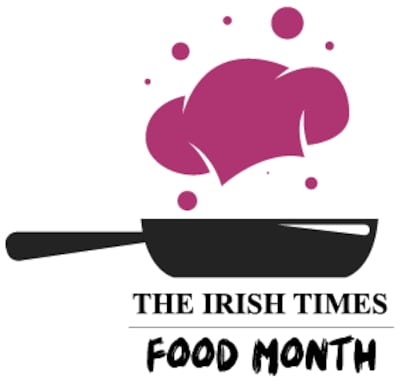There I was in the west last month, visiting family, and investigating the fridge to see what lay within. I found a home-made lasagne, and texted my brother to see if he’d like me to drop some over to him for dinner.

“God no! Thank you, but to tell you the truth, lasagne would be about 99 on a list of 100,” was the forthright answer that came back.
What did lasagne ever do to you, I thought. I looked at the text again. Then I texted him back. “What’s 100, by the way?”
My phone beeped with the swift reply. “Calves’ brains would be the worst. I nearly ordered them once in France. I overestimated the fluency of my French.”
Later that day, there was another text, suggesting I look at the Larousse Gastronomique on a bookshelf in the house, where I would find many recipes in evidence of the Gallic fondness for cooking the things contained in calves’ heads.
It's Food Month at The Irish Times all through November, so off I went in search of it, to educate myself on ways of cooking offal.
The extremely heavy first English language edition of Larousse Gastronomique that I subsequently found, was published in 1961. There was a price of four guineas on the cover. I had seen it there over the years, but never opened it. The huge A4-size book runs to 1,100 pages, and it was an achievement to simply lift it on to a table.
The instructions for preparation begin: 'soak the feet of a young camel'. (It didn't specify if the young camel was dead or alive at the time of its feet being soaked)
I turned the pages cautiously, searching for the “offal” section. All I can say is, I had no idea you could do so many things with the insides of a calf’s head. There were pages and pages of recipes in tiny font for different ways to prepare these brains. You could cook them: in browned butter, fried in batter, in jelly, with paprika (Hungarian style), with curry sauce (Indian style), au gratin, and don’t get me started on what you can do with calves’ ears, its lungs, heart and liver.
I kept on turning pages. There was much that seemed antediluvian. Songbirds were still being eaten in vast quantities. The ortolan birds, now in danger of extinction, feature in several recipes.
“This small bird enjoys a high reputation as a table delicacy. They are quite plentiful in the south of France. They can be prepared in any way suitable for garden warblers or larks.” One of the recipes necessitated 20 birds for an entree.
There are many recipes for cooking blackbirds, thrushes and larks. There’s a slightly aloof reference to the fact that larks in countries other than France are “more in demand as an aviary bird than as food, by reason of its varied and harmonious songs. In France, larks are eagerly sought for the preparation of lark pâté, greatly esteemed by all gastronomes.”
As for thrushes, “The song thrush makes excellent eating. It grows fat on grapes... Thrushes can be cooked in various ways. They are best roasted...”
I did not think camel was native to the European country of France, but, nonetheless, there are nine recipes for various parts of the ship of the desert. They include “roast camel’s hump”, “ camel couscous”, “ragout of camel with tomato sauce” and “camel’s feet a la vinaigrette”. The instructions for preparation of this one begin: “soak the feet of a young camel”. (It didn’t specify if the young camel was dead or alive at time of its feet being soaked.)
There are many recipes in this book that made me feel extremely queasy. Turtle soup, for example, which has detailed descriptions of how to bleed and blanch the creature.
“It is the aristocratic soup par excellence, often served at the great diplomatic dinners and ceremonial repasts.” Turtle flippers – “particularly prized” – feature in four recipes. In the mood for porcupine? Described here as an “animal whose rather fat flesh is good to eat, especially when young.”
The much-reported modern methods of mass production of beef, poultry and shellfish is a horror in itself
The more I read from Larousse Gastronomique, the more I wondered if our diets were better or worse these days, or if we are in fact any more respectful of the birds and creatures that share our world. We may not be killing larks in great numbers to make them into pâté, or exporting live turtles from the West Indies to undiplomatically serve up at diplomatic dinner, but the manner in which we consume food in 2021 is shameful in a different way.
We don’t, for instance, as my brother made clear, have much appetite for animal innards or the contents of their heads. Nose-to-tail eating, as promoted throughout Larousse Gastronomique, is now primarily a restaurant concept that most ordinary people don’t practise as home cooks. We only eat very specific parts of birds and animals. The rest is often wasted.
The much-reported modern methods of mass production of beef, poultry and shellfish is a horror in itself. And it’s a sorry fact that we also waste and throw away so much food. In Ireland, we throw away 150kg of food a year, per household. Globally, more than a quarter of all food produced is wasted; a truly horrendous statistic.
I put Larousse Gastronomique back on the shelf, feeling conflicted about what I had just read. Maybe we should be considering eating more calf brains, instead of lasagne. Not, however, that I think my brother will be eating either of those things any time soon.









